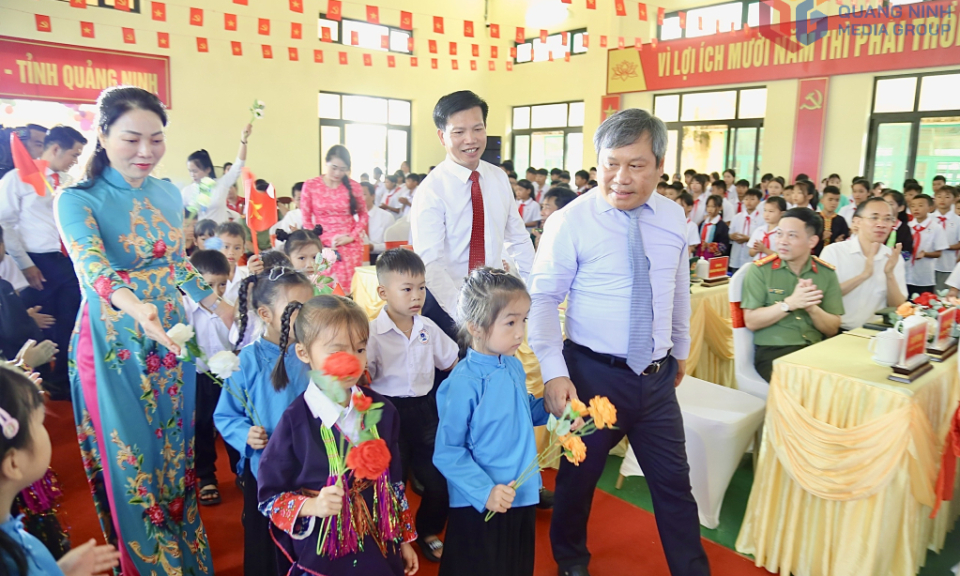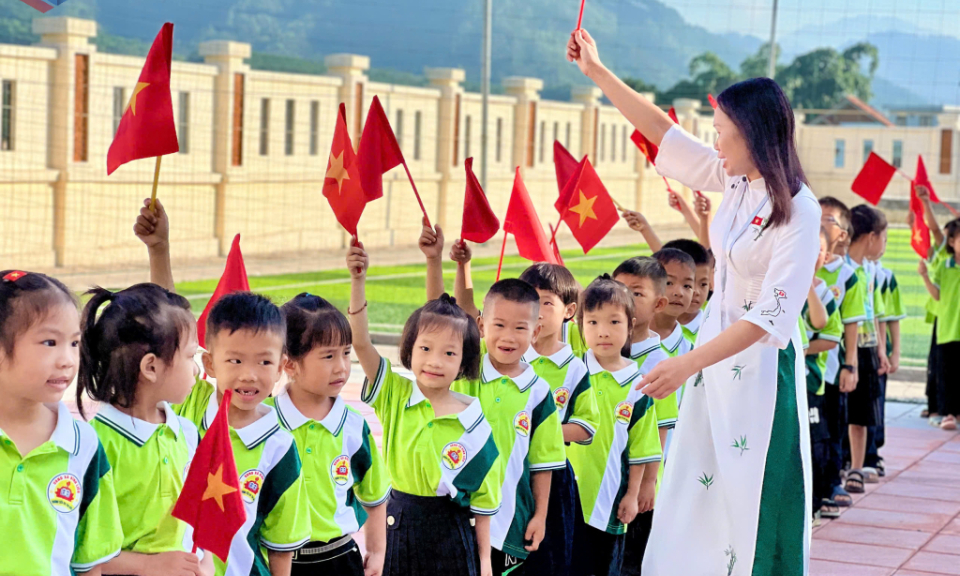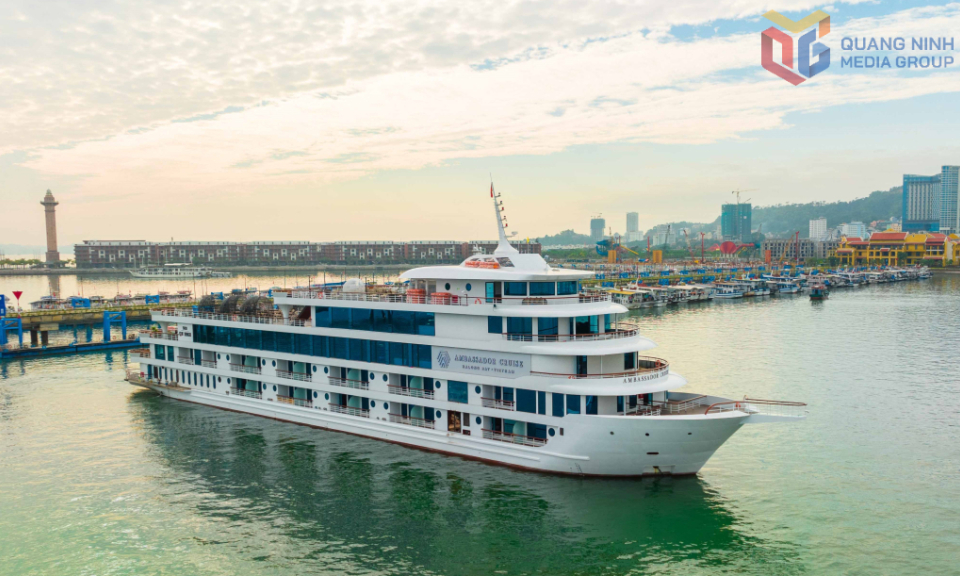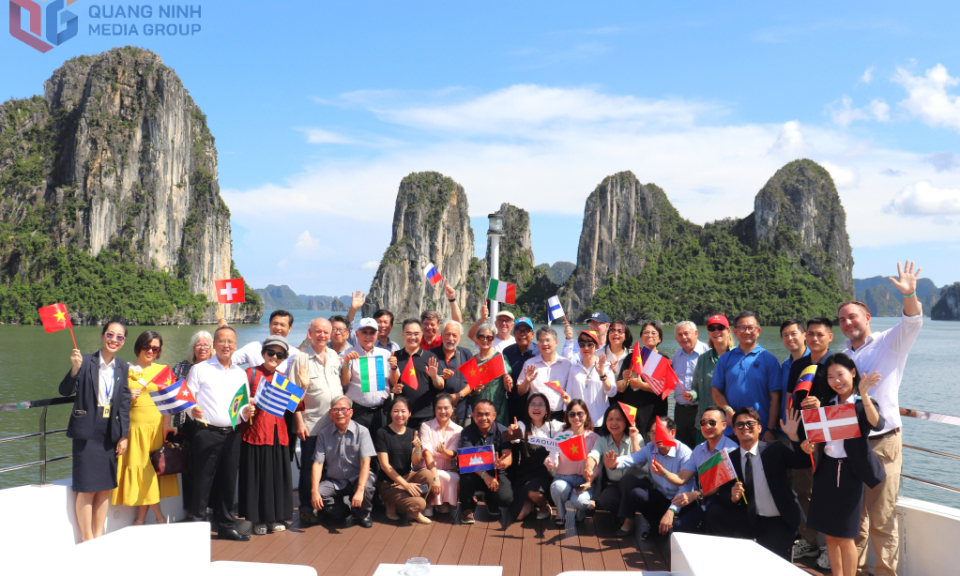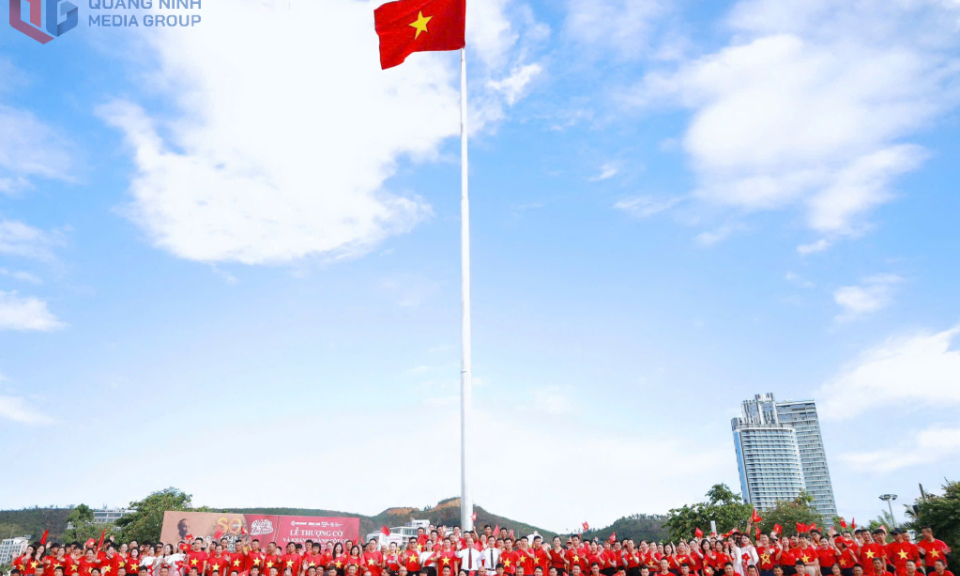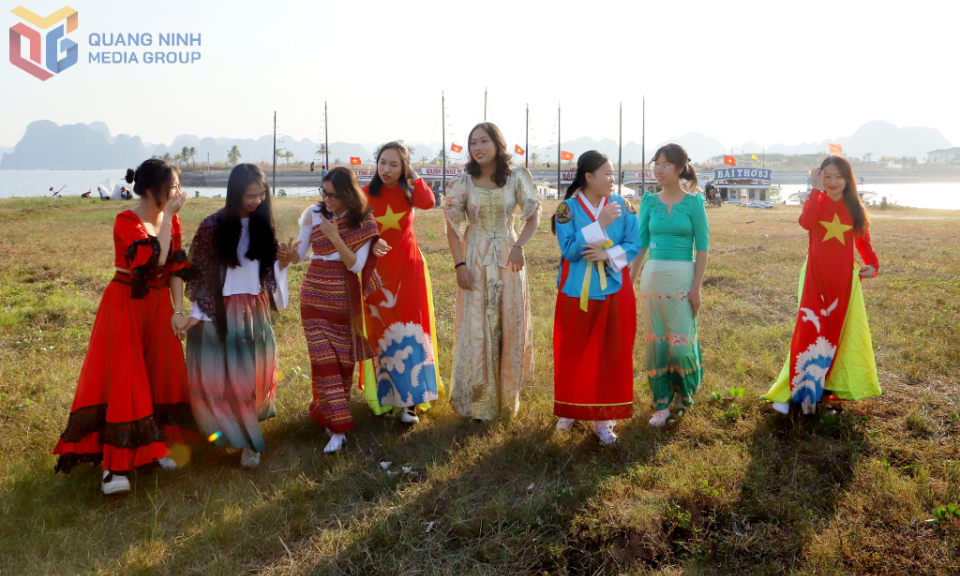12 major Spring festivals in northern region
Spring is unanimously the most festive season in Viet Nam in general and the North in particular.
Viet Nam is home to many traditional festivals which are the celebration of ritual and cultural activities that take place in communities all across the country. And while these celebrations are conducted at different times throughout the year, spring is unanimously the most festive season in Viet Nam in general and the North in particular. During the time of such festivals, the sacred rituals, customs, regulations, and entertainment activities of specific communities are very vividly portrayed.
The typical festivals in the North such as Huong Pagoda Festival, Yen Tu Festival, Lim Festival and Tran Temple Festival... are hot spots. Dozens of thousands of tourists come to visit scenic panorama and pagodas and worship for health, luck and prosperity.
However, due to the concerns of the COVID-19 pandemic, festivals might be canceled or receive limit number of participants.
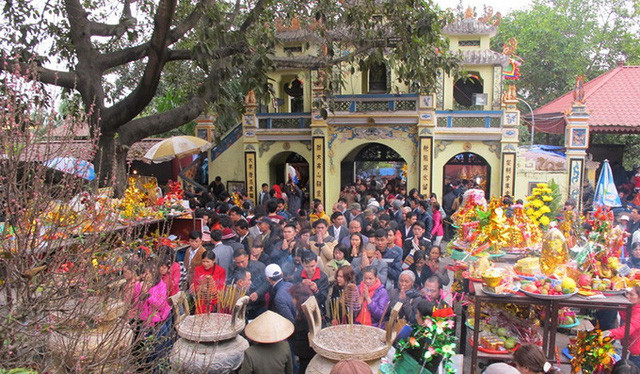
1. Keo Pagoda Festival in Thai Binh Province
At Keo Pagoda, there are two festivals each year. Spring Festival is open on the fourth of the first month of the Lunar New Year. The Autumn Festival is from 13th to 15th of ninth lunar month and is a memorial to commemorate Zen Master Khong Lo (1016-94) – founder of the pagoda.
While the Spring Festival is both an agricultural festival and a festival associated with the livelihood of agricultural residents near rivers, the Autumn festival, besides the purpose of entertainment, is considered as a historic festival.
The events feature religious rituals such as Buddhist offerings and palanquin parades. Communal activities -- love duet singing on boats, performance of a traditional dance, and folk games including duck catching contest, rice cooking contest, firecrackers contest, blindfolded drum beating, climbing traditional bridge are also organised.
The Keo Pagoda is considered one of the most unique ancient pagodas in terms of architecture in Viet Nam. Its festivals were recognised as national intangible cultural heritage in 2017 by the Ministry of Culture, Sports, and Tourism.
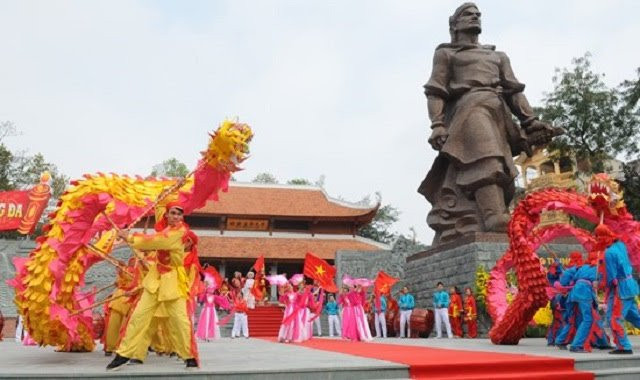
2. Dong Da Festival in Ha Noi
Dong Da Hill festival is one of Ha Noi's most popular and oldest Tet events. The spiritual festival is annually held in the fifth day of the lunar calendar in Dong Da District.
From early in the morning, local residents gather en mass at the Dong Da Culture Park, a historical site where the Ngoc Hoi-Dong Da battle for the capital took place in 1788.
The festival is organised to commemorate the considerable merits of Emperor Quang Trung - a national hero against Chinese invaders centuries ago.
The festival is held to uphold the country's cultural values, while educating younger generations about the traditions of patriotism and national pride.
The festival also featured a series of music art performances and folk games re-enacting the victory and various activities including marital art competitions which represent the power and intelligence of the country.
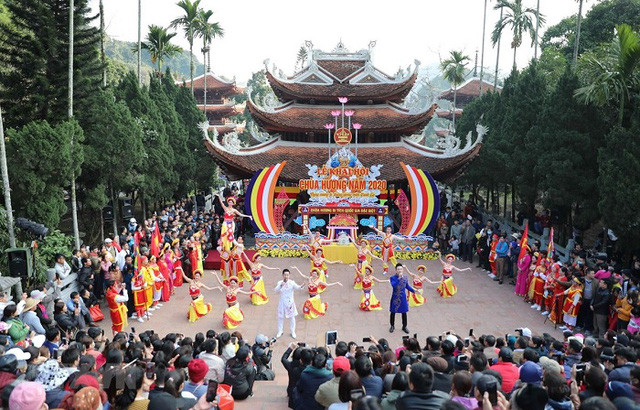
3. Huong Pagoda in Ha Noi
Huong (Perfume) Pagoda Festival is one of the most famous Buddhism festivals during Tet, especially amongst people from the northern provinces of the country.
The festival begins on the sixth day of the first lunar month in My Duc District and will last until the end of the third lunar month.
Unlike other places, Perfume Pagoda gathers many temples, small pagodas and caves associated with mountains and forests, making it a large landscape complex, with a harmonious architecture between natures and man-made. This is not only a cluster of spiritual and cultural relics but also a national cultural heritage.
People visit Huong Pagoda to not only pay respect to the Buddha but also enjoy the tranquil landscape of Yen wharf and other sacred places of the complex.
The festival includes a variety of cultural rituals and traditions such as boat cruise, trekking, hiking, folk music performances, etc.
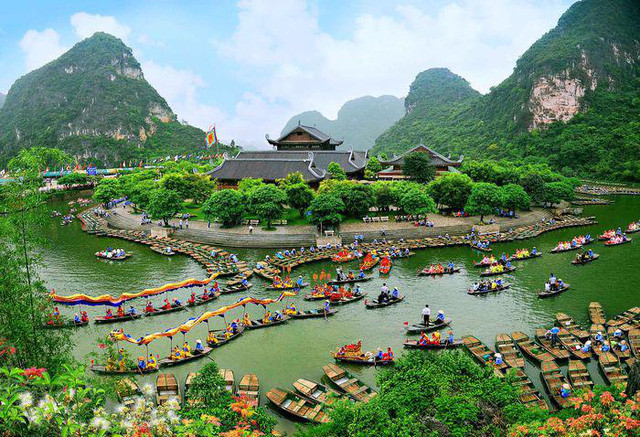
4. Bai Dinh Pagoda Festival in Ninh Binh Province
Bai Dinh Pagoda Festival is kicked off on the sixth day of first lunar month and also last until end of the third month.
The pagoda is Southeast Asia's largest Buddhist complex of old temple and a new one built in 2003 in an area of 107ha in Gia Vien District. It consists of several temples and over 500 intricately carved statues of Buddha, including a 10m-tall 100-ton one that's made of bronze.
The festival attracts hundreds of thousands of pilgrims to the famous ancient capital city of Hoa Lu.
The festival consists of two parts: ceremonies and entertaining activities. Ceremonial rites include offering incense to Buddha, commemorating Saint Nguyen Minh Khong, giving oblations to God Cao Son and attending Goddess Thuong Ngan's audience.
After all solemn rituals, entertaining activities will be organised. People can take part in playing folk games, visiting the entire structures, sightseeing the various caves, enjoying traditional music performances of cheo singing, ca tru singing and xam singing.

5. Giong Festival in Ha Noi
Giong festival has been recognised as an intangible cultural heritage of the world by UNESCO. This is a great occasion for Vietnamese people to show their respect to national heroes as well as patriotism to their country.
There are two celebrations of Giong Saint annually. The first one is held in Soc Temple beginning from the 6th to 8th of the first lunar month. The second one is held in Phu Dong Temple on the 8th and 9th day of the fourth lunar month.
The festival is to commemorate Saint Giong, one of the four immortals of Vietnam. He is a great hero in Vietnam's mythology, with his splendid merit in defending the country against foreign enemies.
People celebrate the festival with a hope for abundant harvests and happy lives.
In addition, the festival provides its goers a chance to immerse themselves in abundance of entertaining activities, including gleeful folk games and traditional singing performances.
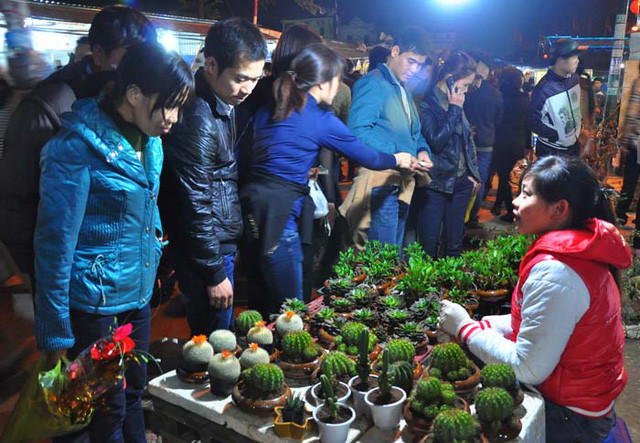
6. Vieng Market Festival in Nam Dinh Province
Vieng Market, in Vu Ban District, is launched only once in a year, when people have just finished their Tet (Lunar New Year) holiday.
It opens on the 8th of the first lunar month, however, the most spiritual moment falls on the night of the seventh and early eighth.
The two-day-only event is believed to bring luck to visitors, both sellers and buyers at the market. The market offers a wide range of goods, from food to children clothes, potted plants to farming tools, all of which are bought and sold without bargaining.
Besides visiting the market, shoppers can also visit pagodas and temples nearby to worship Mother Goddesses and pray for prosperity.
Consequently, there are 40,000-50,000 people coming to the market on the night of seventh alone.
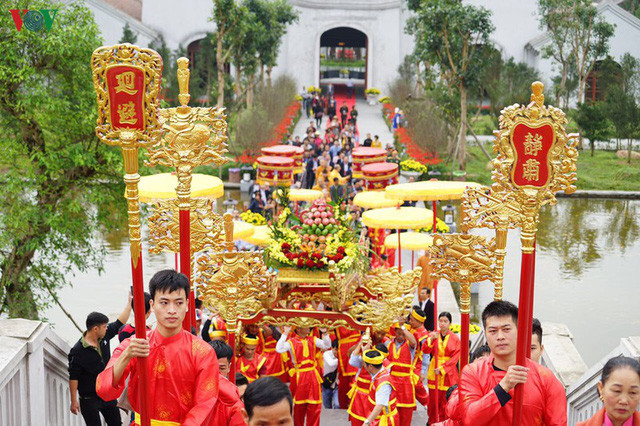
7. Yen Tu Festival in Quang Ninh Province
Yen Tu Festival is held at Yen Tu Mountain, Uong Bi City, from the 10th day of the first lunar month to the end of the third lunar month.
Yen Tu is a pagoda complex that comprises 11 pagodas, countless shrines, accommodated structures, and historical and cultural relics associated with the founding and development of Truc Lam Zen meditation in Viet Nam.
Yearly, thousands of visitors come to Yen Tu to attend solemn processions and rites and pray for lucks and health to themselves and their family.
Apart from traditional art programmes, they can also participate in folk games like cock fighting, tug of war, con (cloth ball) throwing and chess.
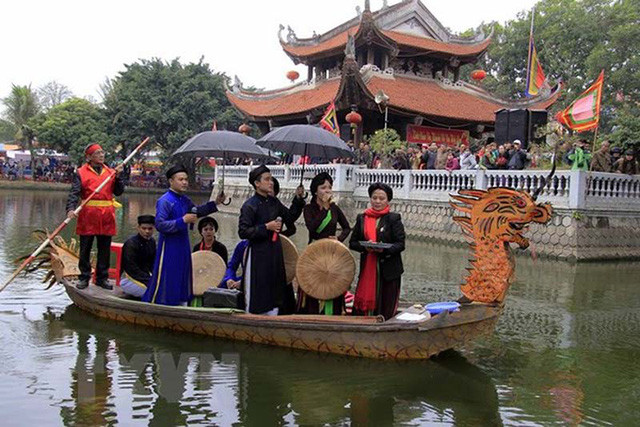
8. Lim Festival in Bac Ninh Province
Lim Festival opens annually on 12th-14th days of the first lunar month in the year. The festival takes place in Tien Du District.
The festival consists of two major elements: worship ceremonies to honour local deities and festive activities such as weaving and wrestling competitions, cock fighting, calligraphy writing and quan ho (love duet) singing.
The quan ho singing, which has become one of UNESCO's Intangible Cultural Heritage since 2009, is the highlight of the festival. It is a living historical record of the daily life of Vietnamese people. The beautiful lyrics are of profound meanings, and incline leading up the pagoda on Lim hill, where Lim Pagoda is located.
Visitors can enjoy quan ho's beautiful lyrics at different stages and interact with singers in traditional costumes. They sing love duets together in pair of one male and one female. Do not miss the taste of betel chewing while enjoying the smooth and lovely melody of folk songs.
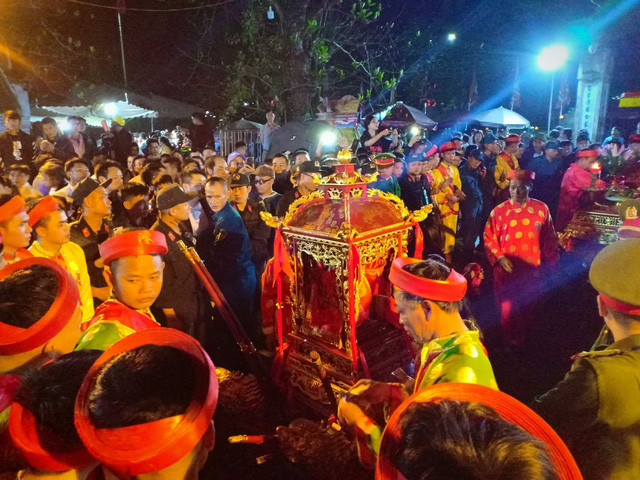
9. Tran Temple Festival in Nam Dinh Province
Tran Temple Festival is organised from 13th to 15th days of the first lunar month in Nam Dinh City.
The ceremonies aim to honour ancestors of the Tran dynasty (1226-1400), who earned their livings from fishing and pray for good weather.
The ceremonies also remind locals of famed fish breeds dating back hundreds of years in Tuc Mac Village, in today's Loc Vuong Ward. The village was also the residential area of the Tran family in Nam Dinh Province.
The ritual of opening the royal seal is an important ceremony held on the night of the 14th day of the first lunar month. The seal-opening ceremony dates from a time when the King worshiped the Heaven God and the royal court opened the national seal to return to normal work after a Lunar New Year Holiday.
It was followed by festive games and activities of weightlifting, dragon and tiger dances, and chess competition.
The festival was recognised as national intangible heritage in 2014.
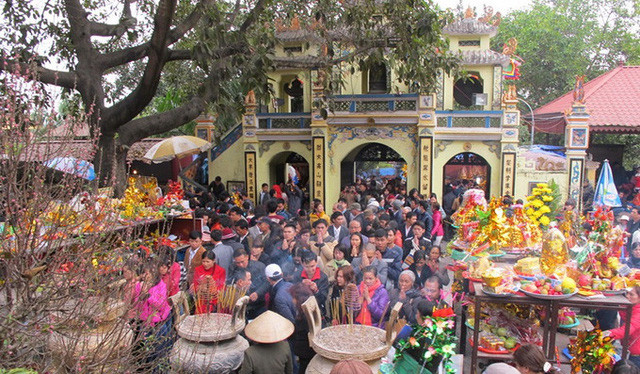
10. Store Goddess Temple Festival in Bac Ninh Province
Ba Chua Kho (Store Goddess) Temple Festival is on the 14th day of the first lunar month in Vu Ninh Ward, Bac Ninh City when people conduct a worship ceremony to the Goddess and ask for her blessing in business.
The temple is dedicated to a wife of King Ly Nhan Tong (1072-1127), who was born into a poor family in nearby Qua Cam Village. After getting married to the king, she asked the king to return home to help locals farm. She also helped manage the State's food storage of the royal troops by Nhu Nguyet River (today's Cau River) during fighting against northern invaders. She died in a battle in 1077.
The festival includes incense offering ceremony, custom of borrowing money from her and then paying back at the end of the lunar year, to pray for property and good luck.
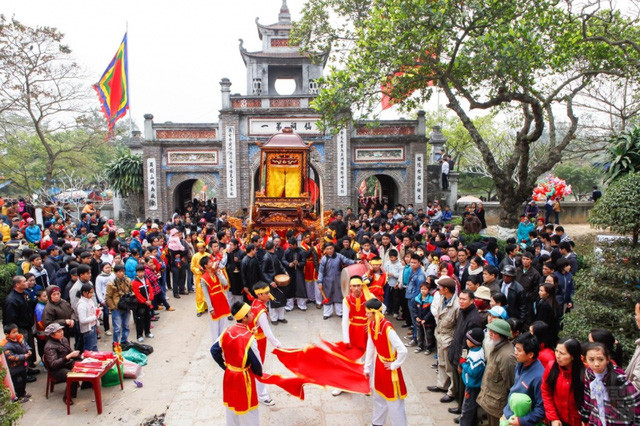
11. Co Loa Festival in Ha Noi
The Co Loa Festival is held annually from the sixth to the 16th of the first lunar month. It takes place in the pagoda that honors An Duong Vuong in Co Loa Commune, Dong Anh District.
People in Co Loa village and nearby villages hold the festival to honor the merit of King An Duong Vuong, who founded Au Lac State and built Co Loa Citadel.
On the sixth day, the literature procession is preceded by a flag that symbolizes the five elements (metal, wood, water, fire and earth), a musical company, and a sacrifice.
Besides these processions, there are many activities such as swinging, rice cooking, singing Vietnamese popular opera and other events.
On the 16th day of the first lunar month, the festival is closed with a thanksgiving ceremony.
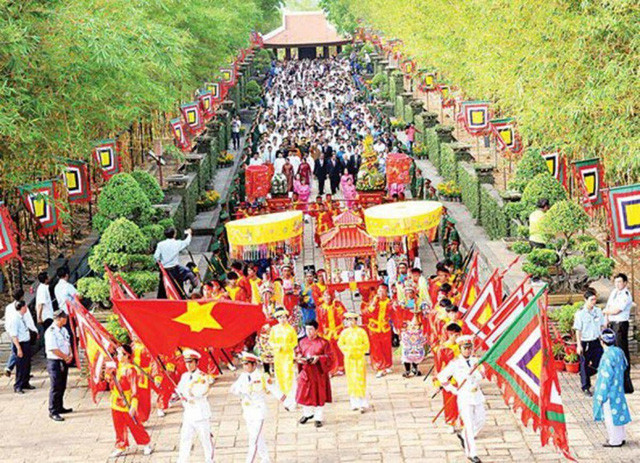
12. Hung Kings Festival in Phu Tho Province
The Hung Kings Festival is held annually in Phu Ninh District from the eighth to the 11th day of the third lunar month, as a tribute to the founders and first kings of the nation.
The main festival day, which is also a public holiday in Viet Nam, is on the 10th day.
The festival consists of two parts as usual: ceremonies and festive activities.
The ceremonies include the Commemoration Ceremony for the legendary father of the nation Lac Long Quan, worship ceremony dedicated to Mother Au Co, worship ceremony dedicated to the 18 Hung kings and a flower offering ceremony for President Ho Chi Minh.
The commemorating activities also include an incense offering ceremony by locals at the temples and palanquin processions from neighbouring areas to the site.
The activities include street festivals in Viet Tri City, art shows and folk games.
UNESCO placed the worship of Hung kings on the Representative List of the Intangible Cultural Heritage of Humanity in 2012./.

